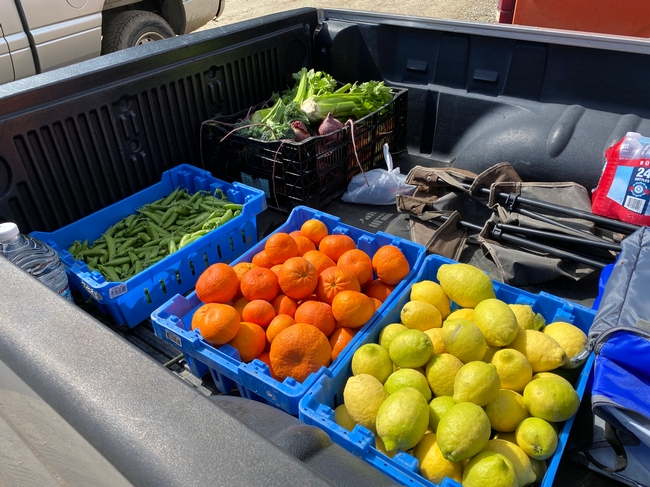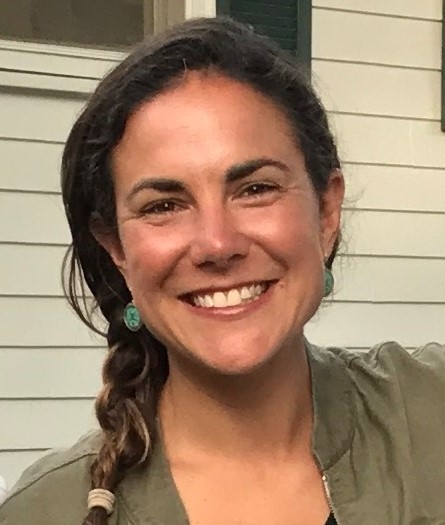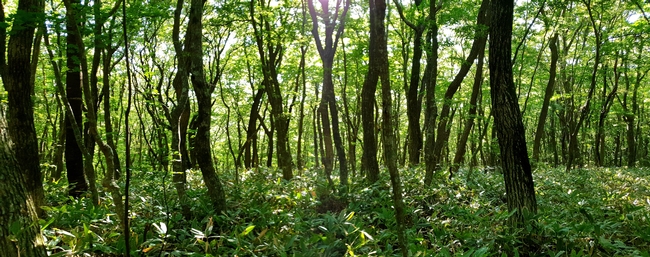
Posts Tagged: Ventura
Essential Read:
Invasive shot hole borers (ISHB) are tiny beetles that are posing a significant threat in Ventura County and beyond.
There's new information provided in this blog post by Wayne Farnsworth of BrightView Tree Care Services and Randall Oliver, UC ANR Integrated Pest Management Program. It appeared on the Channel Islands Chapter of the Community Association Institute website.
These pests are becoming established in parts of Ventura County. Farnsworth and Oliver note that "Unlike many insect pests, invasive shot hole borers infest a wide variety of tree species, including many common ornamentals, avocados and California natives. Sycamores and box elders are among their favorites, and they also attack live oaks, valley oaks and alders, all of which are abundant in our area."
Per UC ANR, invasive shot hole borers are
"two closely related species of small, non-native, beetles that bore into trees. ISHB introduce fungi that cause a tree disease called Fusarium dieback (FD). The ISHB-FD pest-disease complex is responsible for the death of thousands of trees in Southern California and poses an imminent threat to the integrity of our urban and natural forests.
Invasive shot hole borers attack a wide variety of tree species including avocados, common landscape selections, and California native species in urban and wildland environments."
You can learn more about ISHB at the UC ANR Integrated Pest Management website.
As Julie Di Blasio reported last year, "...invasive shot hole borer (ISHB) infestations have been identified in Ventura County since 2015 but have not significantly spread. Discovery of the pest/disease complex was found in late 2018 in the urban forest of Meiners Oaks. Citizens Journal recently published an article about the removal of a tree that was at risk for amplifying the local infestation and causing potential other community harm."
UCCE Ventura has been collaborating to address ISHB with UC insect, disease, education specialists, Ventura County Agricultural Commissioner, CAL FIRE, US Forest Service, several other agencies and non-government organizations. We are locally active in monitoring and outreach. Ventura County Master Gardeners Invasive Pests Outreach Group augments our work through their efforts to educate the public, firewood users and vendors."
Image credit: Akif Eskalen, UC Davis/UC ANR

Invasive shot hole borer on coin - Akif Eskalen
Fire Resources
Current fire activity in Ventura County reminds us that fire season is here. It's critical to be prepared. Here are some important resources to help you get ready and stay apprised of fire activity in Ventura County.
For the latest fire incident information, visit the Ventura County Fire Department website. This website also contains a wildfire action plan for farmers, ranchers and growers.
We also suggest you bookmark the VC Emergency portal. You can access the Ventura County Emergency Preparedness Guide in English and Spanish.
Here are other resources we recommend:
- Fire in California This is UC ANR's comprehensive fire resources website. This site contains the latest information on fire ecology; wildfire preparation; health and safety in wildfires; wildfire recovery; and more. Useful information for homeowners, land owners and land stewards.
- CA Fire Science Consortium is a network of scientists and managers that strives to increase the awareness, understanding, and adoption of wildland fire science information.
- LUC Lab at UC-Berkeley researching land and land use change.
- ReadyForWildfire.org CalFire's fire resources website, which provides many valuable resources for preparedness.
- **NEW Wildfire Risk to Communities maps by US Forestry Service
Be sure to follow our UCCE Livestock & Range page on Facebook. Advisor Matthew Shapero helms that page and often posts fire information there. If you haven't had an opportunity to meet Matthew, you can learn more about his work in this blog post.
ICYMI, here's a #goodread about Pandemic and Wildfire: California is Preparing for a Crisis Within a Crisis
Stay safe.

Credit: Michael Held, Unsplash
HAREC Donates Fruits and Vegetables to Community Organization and Local Schools
Nearly two tons of fruit and vegetables grown at UC's Hansen Agricultural Research and Extension Center (HAREC) in Santa Paula have been donated to Food Forward and the Ventura Unified School District (VUSD), destined for children and...

UC HAREC at the Faulkner Farm in Santa Paula
UC HAREC Donates Fruits and Vegetables to Food Forward and Ventura Schools
Nearly two tons of fruit and vegetables grown at UC's Hansen Agricultural Research and Extension Center (HAREC) in Santa Paula have been donated to Food Forward and the Ventura Unified School District (VUSD), destined for children and families.
Some of the vegetables – planted by volunteers and farm staff - became available when UC HAREC's farm field trips were canceled due to COVID-19. Other vegetables were harvested from the student farm located at HAREC, a partnership with VUSD and the city of Ventura. Kale and lettuce at the student farm were planted by youth from DATA and Montalvo schools.
Every fall and spring, volunteers from the UC Master Gardener program propagate seedlings for schools, bundling them into variety packs of vegetables and herbs, which are given to schools with gardens. Because of COVID-19, plants were given to schools for direct distribution to families. Ventura Unified School District staff partnering in this effort include Kara Muniz, Director of Food and Nutrition Services; Ashely Parrish Decker, Nutrition Educator, who runs the Student Farm; and Alise Echles, RDN.
Additional fruit and vegetables were harvested from HAREC's citrus demonstration area, the site's educational gardens and the farm grounds.
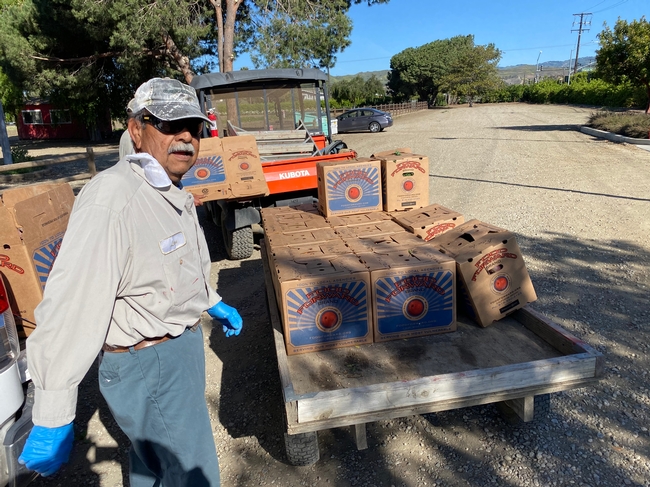
UCCE's education program manager Susana Bruzzone-Miller said, “We are saddened that spring field trip season is cancelled and miss the sound of children delighting in harvesting, sometimes for the very first time. But, it warms my heart that our field trip garden can help feed so many families in need.”
John Antongiovanni, farm manager, worked with the farm staff to organize the harvest. He said, “Working together during this difficult time is very rewarding.”
Food Forward is a gleaning organization that helps residents turn the surplus produce grown on their property into a nutritious food source for local communities. Rick Nahmias, founder and executive director, indicated that the Food Forward Backyard Harvest team remains active, and may be reached via phone at 805.630.2728 or email.

IMG 20200420 153035966 HDR
Agroforestry and Climate Smart Agriculture
Authors: Alli Rowe, UCCE Ventura County and Niki Mazaroli, Strategy Research Science
There has been much buzz and renewed interest recently in planting trees as a tool to combat both the causes and impacts of climate change. But what role do trees play in climate-smart agriculture?
With respect to building healthy soils, tree canopy and leaf litter can provide protection against wind erosion and temperature extremes. Tree roots can help stabilize soils, increase nutrient cycling, and improve soil biota representative of a healthy soil system. The incorporation of trees and shrubs on agricultural landscapes, known as agroforestry, blends the practices of forestry and agriculture and can provide many ecological and economic benefits.
The USDA defines agroforestry as “the intentional combination of agriculture and forestry to create productive and sustainable land use practices” [1]. In theory, it really is this simple: adding trees or shrubs to an agricultural landscape. In practice, like most things in agriculture, it is more nuanced and, of course, site specific. Agroforestry includes a suite of practices with varying degrees of complexity that yield systems also of varying degrees of complexity. The most common agroforestry practices in the U.S. are: alley cropping, silvopasture, riparian buffers, windbreaks, and multi-story cropping (also referred to as forest farming).
Like many of the practices that fall under the header of climate-smart agriculture, agroforestry is both old and new. While the term agroforestry is relatively new, agroforestry has been practiced for millennia, yielding diverse, multistoried food forests in both temperate and tropical climates. The recent interest in agroforestry of the last few decades has been driven in part by the desire to apply the benefits of perennial agriculture to address some of the challenges of row crop and animal agricultural systems.
When considering transitioning to agroforestry practices, it is crucial to understand in advance how the incorporation of perennial woody plants will impact your existing operation. Select trees and shrubs that will grow well in your climate and the specific conditions of your farm, and will complement - not compete with! - existing crops or pasture.

In addition to plant selection, site design and management are also key. For example, where you plant trees or shrubs on your farm in relation to other crops or other elements of your farm can determine whether there is synergy or competition for water and nutrients. Site design can also determine the need for different types of management, such as in alley cropping systems where the widths of the “alleys” between rows of trees must factor in the size of any machinery used.
A local example of agroforestry in action is at King & King Ranch in Fillmore. The King family received a Healthy Soils Program Incentive Grant award to establish a windbreak along a 32-acre plot that is transitioning out of vegetable cultivation. The windbreak will protect the soil from the intense Santa Ana winds that sweep through the valley, establish living roots, sequester carbon in the woody biomass of the trees, and provide habitat for local pollinator and bird populations.
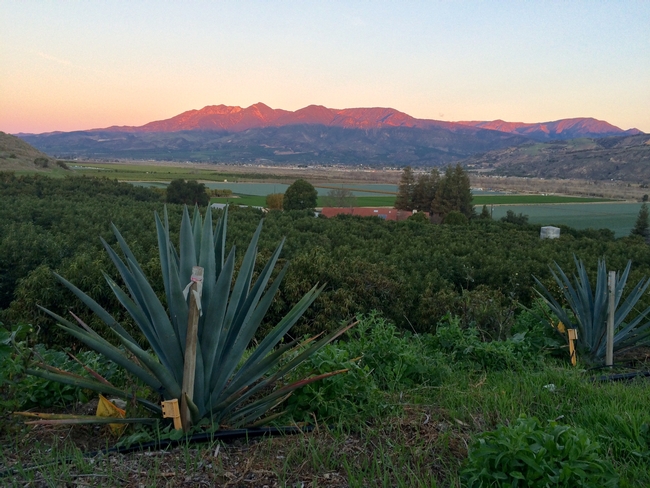
We will be highlighting more about agroforestry practices and the efforts of local producers in future blog posts, so stay tuned!
[1] USDA National Agroforestry Center. Agroforestry Practices. 2019. Available online: https://www.fs.usda.gov/nac/practices/index.shtml (accessed on 31 August 2018).
Climate smart agriculture encompasses management practices that increase soil carbon sequestration, reduce greenhouse gas emissions, improve yields and efficiencies, and promotes climate resilience. The California Department of Food and Agriculture (CDFA) supports three funding opportunities in climate smart agriculture: the Healthy Soils Program, the State Water Efficiency & Enhancement Program, and the Alternative Manure Management Program.
In a collaborative partnership, CDFA and UC Agriculture and Natural Resources have teamed up to support 10 community education specialists throughout the state to provide technical assistance and outreach for the climate smart agriculture programs. As one of these technical assistance providers, my role is to promote and support the adoption of these programs in Ventura County. If you are interested in working with me, please contact me at amrowe@ucanr.edu.

